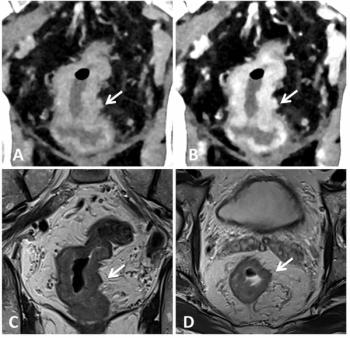
More Training in MRI for Appendicitis Improves Accuracy
Accuracy in evaluating MRIs for acute appendicitis improves after training from more experienced radiologists, and the addition of diffuse weight images also improves reader sensitivity and decreases the amount of time needed to read each image.
Diagnostic accuracy in evaluating
Researchers from Alkmaar Medical Center in the Netherlands evaluated radiologists’ and residents’ ability to read scans using 100 MRI exams of patients who had been suspected of having appendicitis.
Although the radiologists in the study had an average of 15 years of experience (range, seven to 25 years) and all had evaluated images from more than 1,000 CT examinations for acute conditions, none had experience with MRI evaluation for acute abdominal conditions. The residents had evaluated some MRI images, but none were for acute abdominal conditions.
Both the radiologists and residents underwent a training program that introduced them to conventional MRI and diffusion-weighted MRI, without the use of contrast, to evaluate acute appendicitis. They were shown slides with images of patients with suspected appendicitis.
The participants then viewed the test images and recorded two diagnoses: the first was made after viewing the conventional MRI scans and the second after viewing the diffusion-weighted images.
Following the training program, not only were the radiologists and residents quicker in determining their findings by almost two minutes per image, their sensitivity increased. Among the radiologists, the sensitivity increased from 81 percent in the first set of 25 cases to 91 percent in the last 25 cases, with a specificity improvement from 82 percent to 85 percent. For the residents, sensitivity increased from 82 percent to 94 percent and specificity from 82 percent to 91 percent.
After the diffusion weighted images were viewed, all readings improved in sensitivity from 80 percent to 87 percent.
Lead author Marjolein Leeuwenburgh, MD, from the University of Amsterdam and her colleagues concluded that similar training programs could be provided to all inexperienced readers to improve the image readings of patients suspected to have acute appendicitis.
Newsletter
Stay at the forefront of radiology with the Diagnostic Imaging newsletter, delivering the latest news, clinical insights, and imaging advancements for today’s radiologists.



























